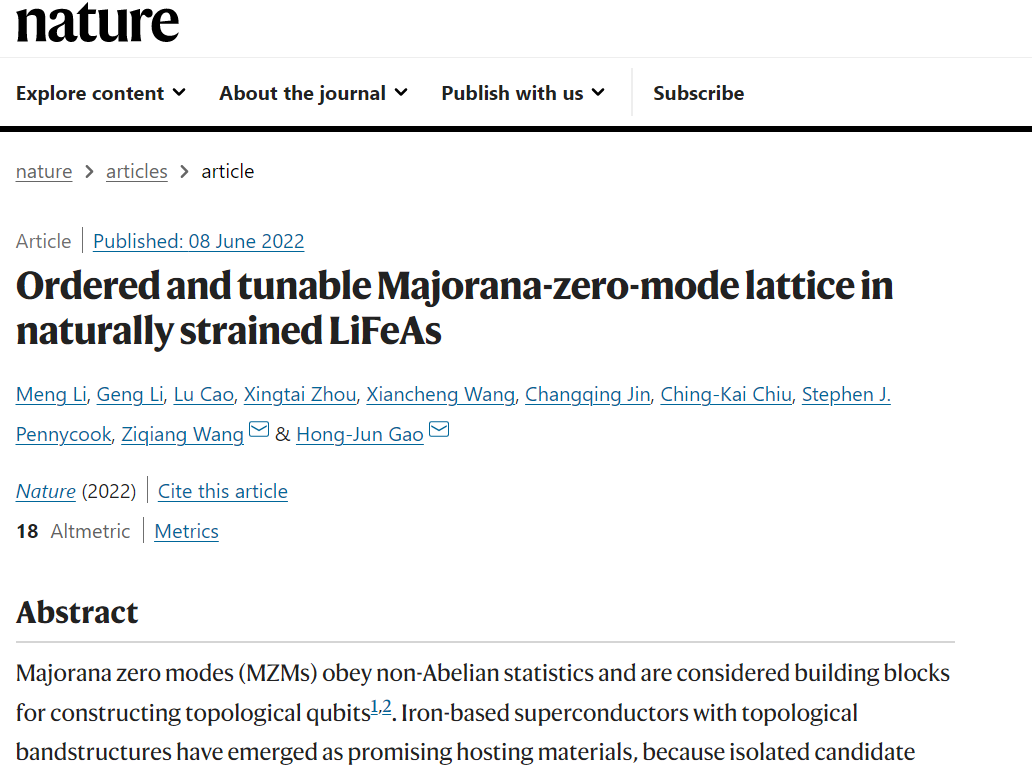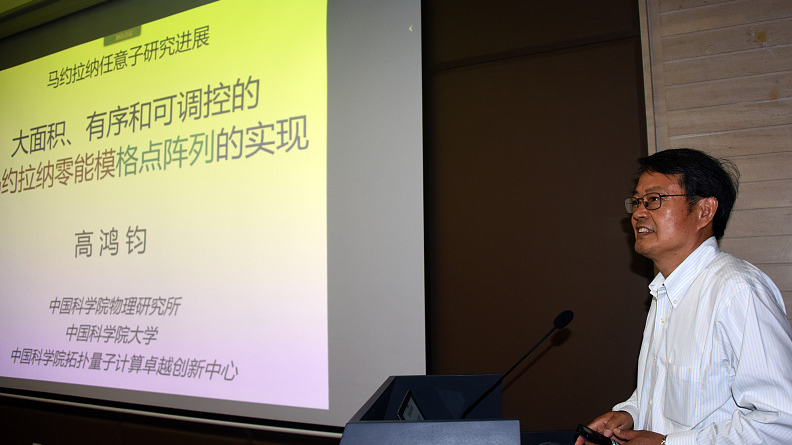
A screenshot of the paper on the web page of the academic journal Nature. /CGTN
A screenshot of the paper on the web page of the academic journal Nature. /CGTN
Chinese scientists have found a way to form an ordered and tunable Majorana-zero-mode (MZM) lattice, a milestone step to greatly improve the performance of quantum computation.
The research findings were published in the academic journal Nature on June 8, led by scientists from the Institute of Physics at the Chinese Academy of Sciences and Boston College.
MZMs are seen as building blocks for constructing topological qubits. A qubit is a quantum bit, the basic unit of information in a quantum computer.
"Four MZMs can be woven into a topological qubit, which is considered an important way to achieve fault-tolerant topological quantum computing," said Gao Hongjun, one of the corresponding authors of the article, according to Wenhui Daily.
The isolated MZMs are found in the topological vortex cores in the superconductors with topological band structures. By using an external magnetic field, the researchers detect that more than 90 percent of the vortices are topological and possess the characteristics of isolated MZMs at the vortex center in the iron-based superconductors stoichiometric LiFeAs, forming an ordered and tunable MZM lattice.

Corresponding author Gao Hongjun introduces the research findings at a press conference, June 6, 2022. /CFP
Corresponding author Gao Hongjun introduces the research findings at a press conference, June 6, 2022. /CFP
The ordered and tunable MZM lattice can help overcome the environment interference – a long-existing hurdle in quantum computing – providing a more reliable, more efficient quantum computing capability.
"Our findings provide a pathway toward tunable and ordered MZM lattices as a platform for future topological quantum computation," said the paper.
Read More: Uncovering China's deep dive into quantum technology

